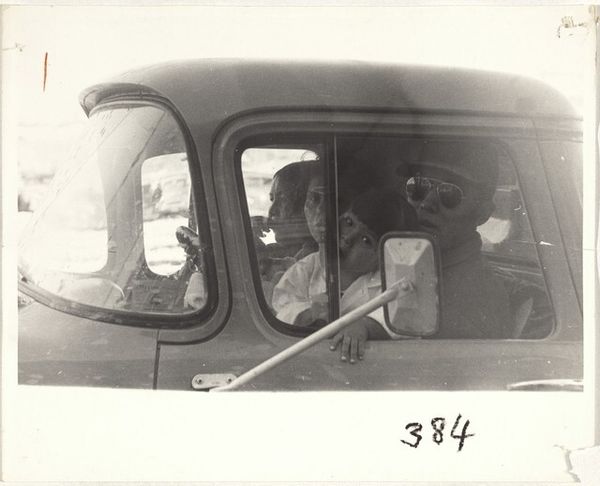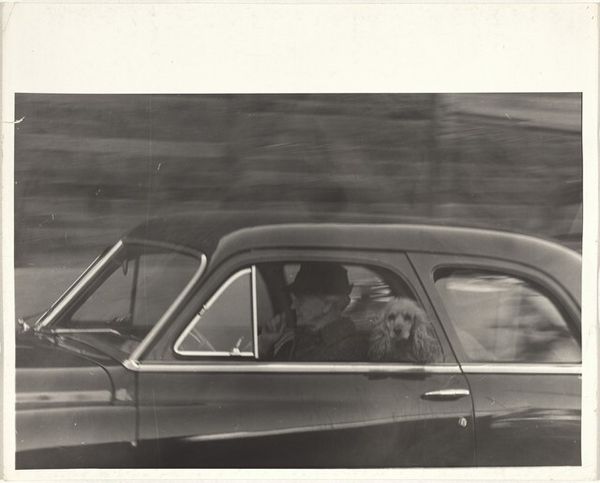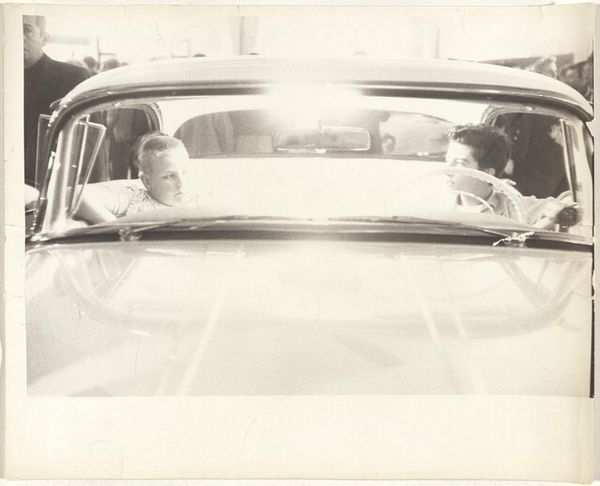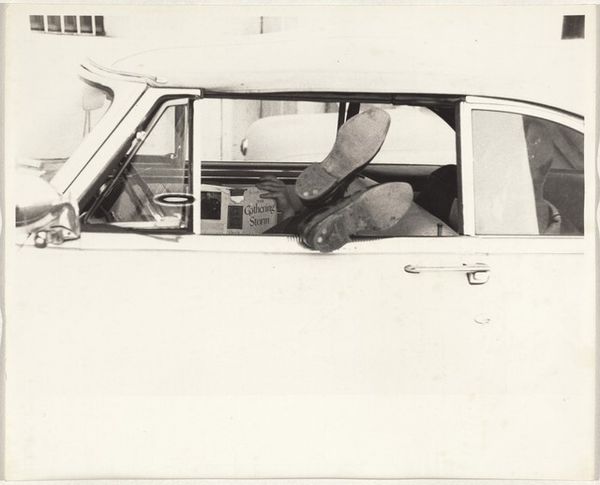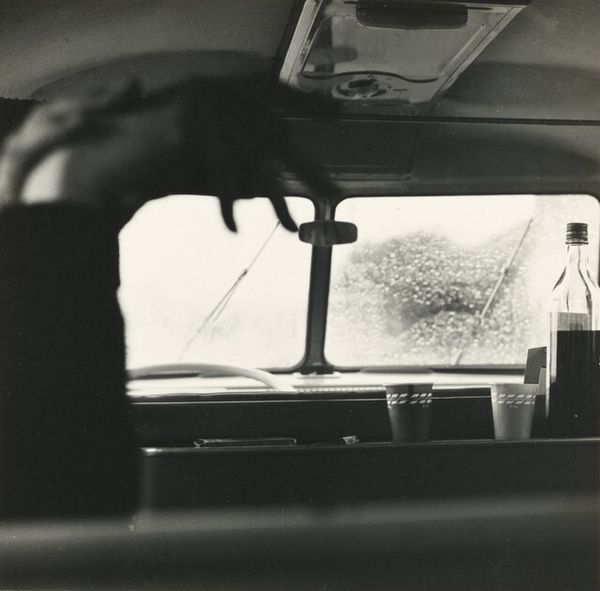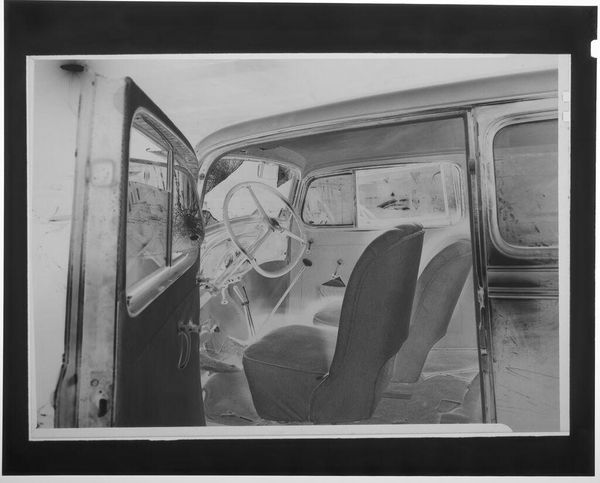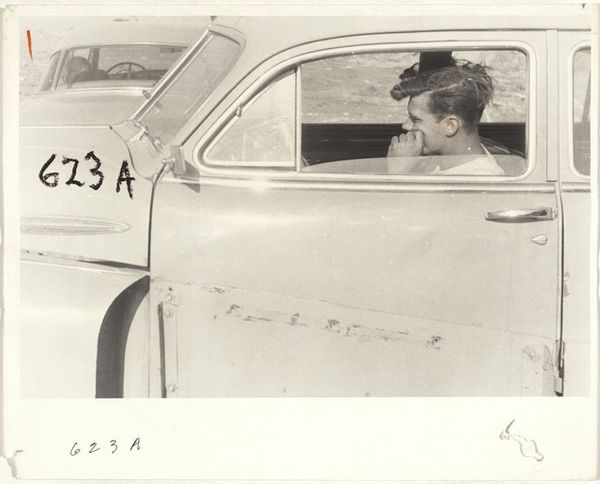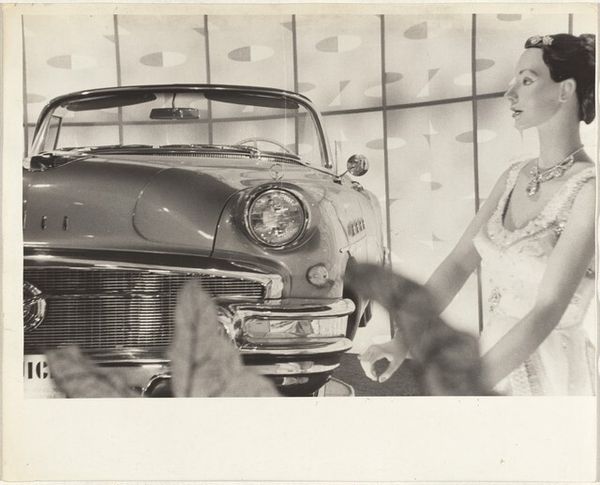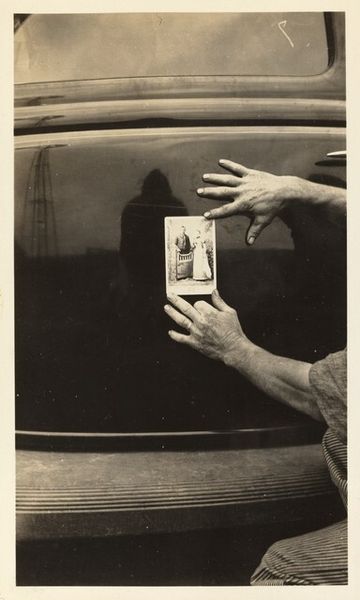
photography, gelatin-silver-print
#
portrait
#
still-life-photography
#
archive photography
#
photography
#
historical photography
#
gelatin-silver-print
#
ashcan-school
#
genre-painting
#
realism
Dimensions: image: 5.5 x 8.2 cm (2 3/16 x 3 1/4 in.) sheet: 6.3 x 9 cm (2 1/2 x 3 9/16 in.)
Copyright: National Gallery of Art: CC0 1.0
Curator: This gelatin-silver print, known as "Untitled (Woman asleep in car)," dates back to the 1940s and is attributed to an anonymous photographer, making it a particularly fascinating case study. Editor: It evokes a potent feeling of weariness. The soft light and intimate framing create a surprisingly vulnerable atmosphere. One wonders, why is she sleeping in her car? Curator: That’s precisely the question that fuels my historical curiosity! What were the circumstances leading to this moment? Was this a common sight in the 1940s? How did travel, class and gender intersect in the postwar years? Considering that automobile ownership expanded significantly, these spaces became extensions of home, particularly for women, during that era. Editor: Interesting point. Did social or political upheaval influence the photographer’s perspective or this woman’s life choices? Is her rest a form of quiet resistance against some pressure or demand? This woman looks tired to the bone. Are the reasons financial or social? Is she in transit, or has she been forced from another space? Curator: These are all very relevant contextual threads to explore. The Ashcan school influences and genre painting associations hint at an intention to capture everyday reality without romanticism, which gives credence to your theories. But let's think about what the absence of identifying information means. Is it to give the subject protection, or perhaps the opposite effect? This photography becomes more complicated and ethically questionable the longer we spend looking at it. Editor: You're right; the lack of a known artist's intentionality shifts how we interpret the image. What seemed initially to me as simply a voyeuristic capturing of intimate fatigue expands to encapsulate concerns around access, consent and power dynamics during the rise of consumerism and mobile freedom. There is more than just tiredness in this shot: this image exudes questions! Curator: I appreciate you pointing out the social context. It urges me to contextualize and rethink how such an unadorned shot is interpreted. Editor: And your points about context lead me to wonder more carefully about both what this image meant then and what it tells us today about class, mobility, and maybe more darkly, who has the power to look at, and document, who, and in what states.
Comments
No comments
Be the first to comment and join the conversation on the ultimate creative platform.


